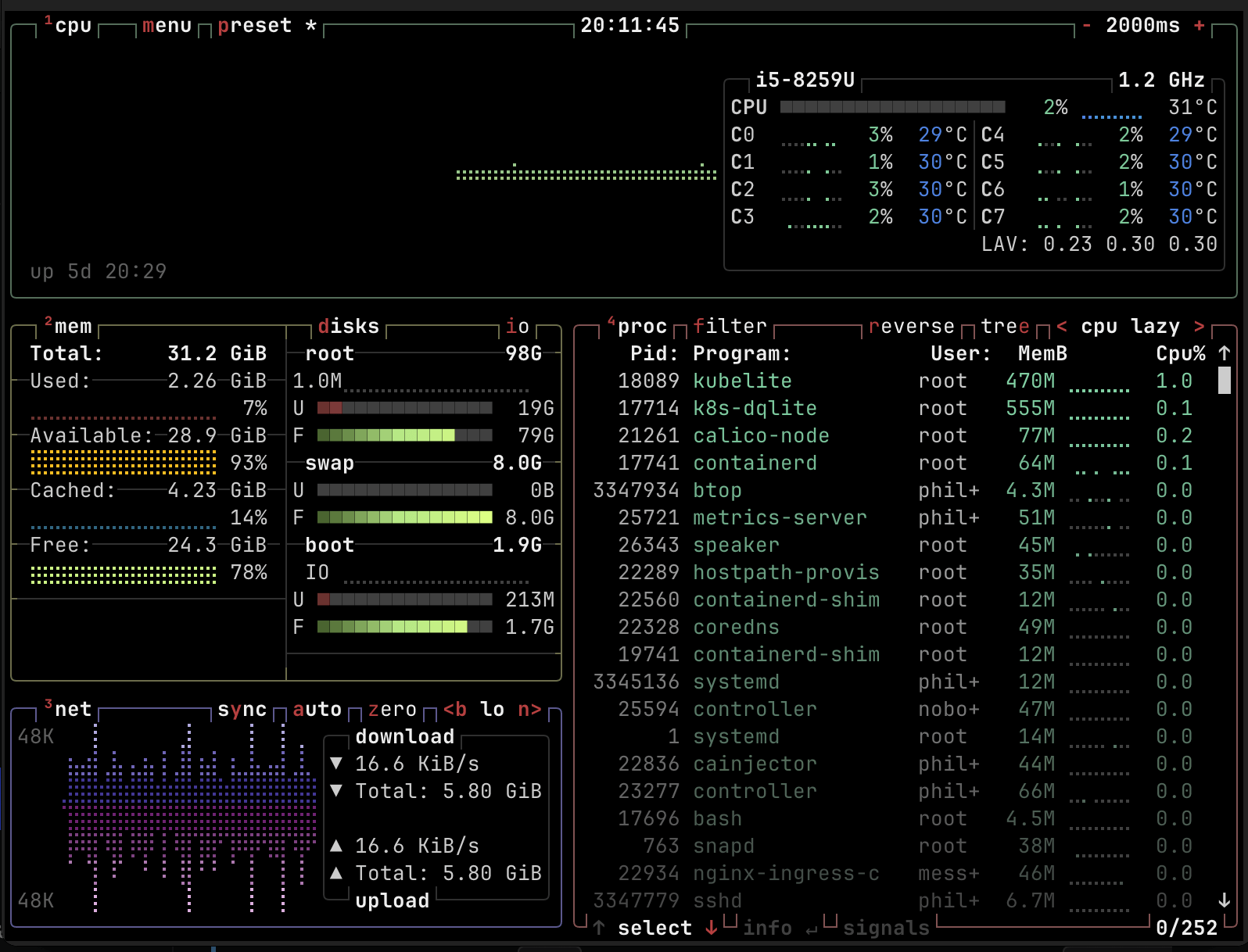New Home Lab Part 2: MicroK8s
My last post I had an outline of the steps I wanted to take. I completed all the hardware configuration and setup of Ubuntu. This leaves just getting MicroK8s installed and configured. I said that I was going to have automation of my cluster, and that is exactly how I set it up. I took a deep dive into launch configurations which I successfully used to create my MicroK8s cluster. The only tricky part was figuring out how to pass arguments to addons like MetalLB, and it wasn’t that challenging. Here is how I set it up.
First step was to create a launch configuration with the various addons that I wanted. I started with the standard launch configuration and just added the addons.
version: 0.1.0
addons:
- name: dns
- name: rbac
- name: ingress
- name: hostpath-storage
- name: cert-manager
- name: dashboard
- name: registry
- name: metallb
args: [192.168.1.231-192.168.1.245]
extraKubeAPIServerArgs:
--authorization-mode: RBAC,Node
extraKubeletArgs:
--cluster-dns: 10.152.183.10
--cluster-domain: cluster.local
The args section for MetalLB is the one item that I would like to focus on. That is how you pass arguments to an addon. That is where I set the IP address range that I want to use for my load balancer resources. After you have your launch configuration defined, you need to copy or create it here:
sudo mkdir -p /var/snap/microk8s/common/
sudo cp microk8s-config.yaml /var/snap/microk8s/common/.microk8s.yaml
After it has been copied, you can run the installation command for the MicroK8s snap. I chose to pin it to a specific version since they auto update.
sudo snap install microk8s --channel=1.32/stable --classic
Once it has finished, you should be able to get all your pods and see that all the things are up and running as expected.
sudo microk8s kubectl get pod -A
NAMESPACE NAME READY STATUS RESTARTS AGE
cert-manager cert-manager-cainjector-fd9bf654b-wf6gm 1/1 Running 0 70s
cert-manager cert-manager-ff4b94468-fdlgs 1/1 Running 0 70s
cert-manager cert-manager-webhook-7749797f6-smdth 1/1 Running 0 70s
container-registry registry-579865c76c-qxczs 1/1 Running 0 27s
ingress nginx-ingress-microk8s-controller-8fp4m 1/1 Running 0 67s
kube-system calico-kube-controllers-5947598c79-fpwz2 1/1 Running 0 75s
kube-system calico-node-tjtgc 1/1 Running 0 75s
kube-system coredns-79b94494c7-n2g9s 1/1 Running 0 75s
kube-system dashboard-metrics-scraper-5bd45c9dd6-fsvr5 1/1 Running 0 28s
kube-system hostpath-provisioner-c778b7559-rjxqx 1/1 Running 0 72s
kube-system kubernetes-dashboard-57bc5f89fb-9wglp 1/1 Running 0 29s
kube-system metrics-server-7dbd8b5cc9-vggkd 1/1 Running 0 29s
metallb-system controller-7ffc454778-v4r68 1/1 Running 0 25s
metallb-system speaker-g86j5 1/1 Running 0 25s
There is a tutorial that covers most of this on the MicroK8s website called How to use launch configurations. I have also published my launch configuration to a repo called my-home-lab-config on GitHub. I will be posting more to that repo as I add more to my cluster. I will also use it to store configuration for any tools that I install.
If you’re curious as to how the single resource usage on the host is going, here is a screenshot from btop.

Not too bad running all of these services. Let’s see what impact my plans have in the long term.
Thanks for reading,
Jamie
If you enjoy the content, then consider buying me a coffee.
